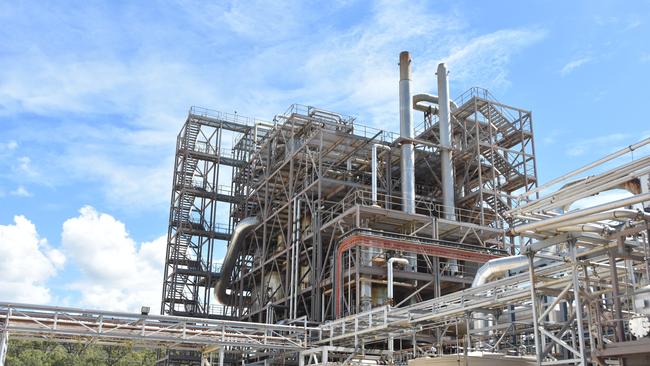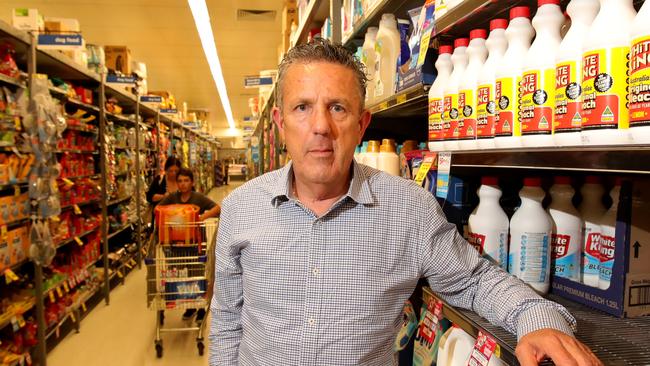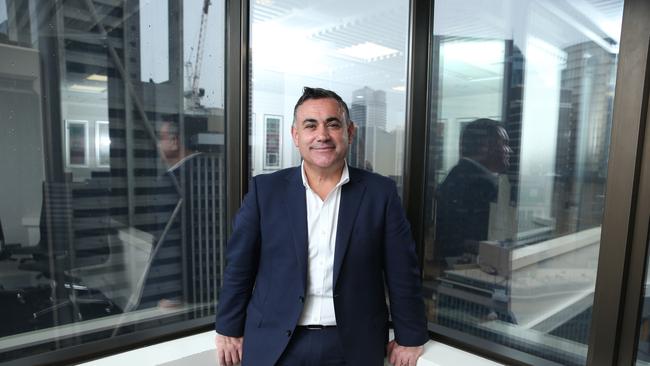Targeted business programs a strong attraction
From a crowded Sydney site to Gippsland Victoria, this energy infrastructure company hasn’t looked back.

Alf Chown had a problem. The chief executive of ASX-listed Energy Technologies Limited had a crowded factory in the Sydney suburb of Brookvale, where subsidiary Bambach Wires and Cables made specialised cables and wires for the high-value infrastructure sector. The factory, which came with Bambach when Energy Technologies bought the business in 2012, was a mess.
“It was a very limited site, with small equipment, no ability to use automation, and no room to expand,” says Chown. “Most of the suppliers were in Melbourne. It was really limiting our production, so we decided to move.”
That was 2018. The “where” did not really matter. Chown says the company was investigating applying for a Federal Government Regional Jobs and Investment Program (RJIP) grant, aimed at helping regions in Australia diversify their economies, stimulate long-term economic growth and deliver sustainable employment. Ten pilot regions were part of the scheme: the applications for the Gippsland region of Victoria happened to be open.
“We got a $2.9m grant for Gippsland, and as part of the grant we had to relocate and establish a new factory. We had found an old leather tanning factory at Rosedale in Gippsland that we took over, and we also bought the assets of another cable business, Advance Cables, in Dandenong, and moved them down.”
The move has “transformed the business”, Chown says.
“It took most of 2019 to refurbish the factory, and install the equipment from Brookvale and Advance Cables. It’s a $7m investment, including the grant, but Rosedale has increased capacity 10 times, with room to expand,” he says.
“We have bigger and faster machines, we can finally use automation, and we’ve taken production from 25 tonnes a month to 300 tonnes.
“We’re two hours from most of our suppliers. We have government support for regional development and employment — we have 45 people working at Rosedale. We found a perfect source of skills from the Bass Strait oil and gas industry.”
Bambach’s labour costs have halved, from 42 per cent of its cost of production in Sydney to between 18-20 per cent of its production at Rosedale.
“We’ve got very strong margin improvement coming through as a result of what we’re doing down there,” Chown says.
Charlie McLeish had a not dissimilar problem to Chown’s Brookvale problem, back in 2011.
The chief executive of ASX-listed Pental Limited, a manufacturer of homecare and personal-care products, had just bought the White King bleach and cleaning products business from its US parent, Sara Lee, and was wondering what to do with its Port Melbourne factory.
“We had two manufacturing sites, one up at Shepparton (in the Goulburn Valley region of Victoria), where we were making our soaps (Lux, Pears, Velvet, Sunlight and Country Life) and laundry-care products (Softly, Huggy, Martha Gardener’s Wool Mix) and Port Melbourne, where we were manufacturing White King products under contract for Sara Lee,” McLeish says.
“We were very limited at Port Melbourne, we had to use external warehousing, and we didn’t like the logistical issues. We found that at Shepparton it was easy to lease, rent or even buy warehousing very close to our site.
“From a whole supply-chain logistical strategy it made more sense to put the White King business into Shepparton, so we spent a lot of capital, bought new plants and took the opportunity to consolidate and put the White King operation into Shepparton.”
Pental now has four plants on its Shepparton site, one making bar soaps, one making the laundry liquids, one making White King, and one making Jiffy and Little Lucifer firelighters. Although Pental received no assistance from any level of government, McLeish would do it all over again.

“Getting transportation in and out of Shepparton, into our major customers in Melbourne, or into Adelaide or Sydney, is a lot easier than out of Port Melbourne,” McLeish says.
And the regional location has great benefits in terms of employment: “You have the skilled local labour, who are fantastic, and loyal, and you have the people who feel priced-out of Melbourne property and want to raise their kids in a country town,” he adds.
“House prices here are one-third what they are in Melbourne — that’s attractive to a lot of people. We have 125 people here now, and we’re exporting out of Shepparton to New Zealand, China and Vietnam.”
Chown and McLeish are just the kind of CEOs over which all three tiers of government salivate, in their constantly professed desire to attract manufacturing businesses to the regions.
“All three levels of government are quite active in this space, but there hasn’t traditionally been a great level of co-ordination between the tiers of government, and even statutory authority incentives,” Dr Kim Houghton, chief economist at the Regional Australia Institute, says.
“There has been a tendency for it to be a competitive process, where you get the politicians spending the incentives so they can announce their great wins, particularly at a state level.”
John Barilaro, deputy premier of NSW and Regional NSW, Industry and Trade Minister, acknowledges that history of competition but says there has been a “reboot” in the wake of COVID.
“I think the Australian public have seen what happens when you close borders, and there’s an expectation that manufacturing, processing and production will be part of the business landscape in this country going forward, from PPE equipment through to food and fibre,” Barilaro says.

“We’re seeing more co-operation between tiers of government, to help boost manufacturing and services in regional areas, than we ever have, because we can’t have those ‘auctions’ — going forward, governments aren’t going to be able to ‘buy’ businesses.
“There’s a realisation now that we need to focus on the natural attributes of each state, and each region, and build on the strengths of those — to have more of a ‘cluster’ arrangement built off the back of government infrastructure. That’s where governments can add the most value.”
Every state is doing something along these lines.
NSW’s version of this is its Special Activation Precincts, a new way of planning and delivering industrial and commercial infrastructure projects in dedicated areas in the state, to foster business growth. The state currently has five of these, at Wagga Wagga, Parkes, Moree, Williamtown and Snowy Mountains.
For example, the Williamtown precinct, next to the RAAF base that is home to Australia’s F-35 fleet and the Asia Pacific Regional Warehouse for F-35s, has a natural defence and aerospace slant, while the Wagga Wagga precinct — based around the Riverina Intermodal Freight and Logistics hub — is focused on renewable energy, sustainability and recycling; advanced manufacturing, value-added agriculture, and freight and logistics.
“It’s not always about attracting new industries, it’s about supporting the robust and competitive mid-sized manufacturers that are already in regional Australia, who’ve grown up there, and who want to expand,” says Houghton.
‘We need to focus on the natural attributes of each state, and each region, and build on the strengths of those’
He gives the example of Southern Oil Refining, which started re-refining waste oil for re-use as lube oil in Wagga Wagga in 2001.
Southern Oil Refining has now expanded into Gladstone in Queensland, working in partnership with Australian-owned waste processing company J.J. Richards to build a state-of-the-art used-oil re-refinery to handle the projected increase in waste volumes resulting from the massive growth of the resource sector in Northern Australia. That business came out of the Bomen Business Park in Wagga Wagga, now the centrepiece of the city’s Special Activation Precinct: its expansion came on the back of the work being done on infrastructure connectivity.
Houghton says all three tiers of government have a major role to play. “You have the federal government, with projects such as the ($10bn Melbourne-to-Brisbane) inland rail. You have the state governments, with projects like NSW’s special activation precincts, building the enabling infrastructure into those areas, to encourage large-footprint manufacturers to locate there.
“Then there are the local governments, who want the economic activity, but have to step up to the plate with planning and facilitation — there is actually a shortage of land in Australia that is zoned ‘heavy industrial’, as in large-footprint, and it’s ultimately for the local governments to ensure that they’re doing everything they can to enable those zones to be developed.
“But we are seeing that if you resource regional candidate areas properly — where you have not only the water and sewerage and power and broadband availability, but the road, rail and even air (in some cases) connectivity, you can both attract businesses and foster the ones you already have,” Houghton says.
It’s not quite “build it, and they will come”, but it is close, says Barilaro.
“When you have a co-ordinated approach, get people out of their silos and cut through the duplication, you can start to do some really good things,” the minister says.
“When you factor in better logistics and infrastructure, and a workforce that’s ready and able, going regional actually becomes a very attractive proposition to a lot of businesses.
“It’s exciting at the moment, because people want to live in the bush again.”
